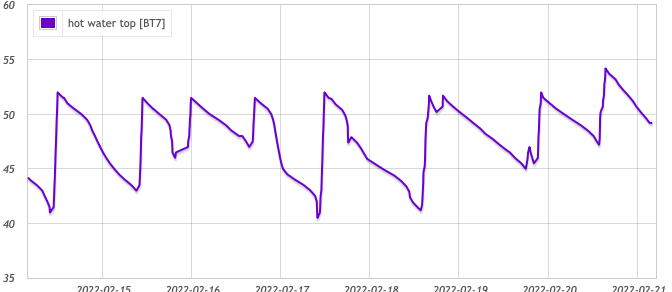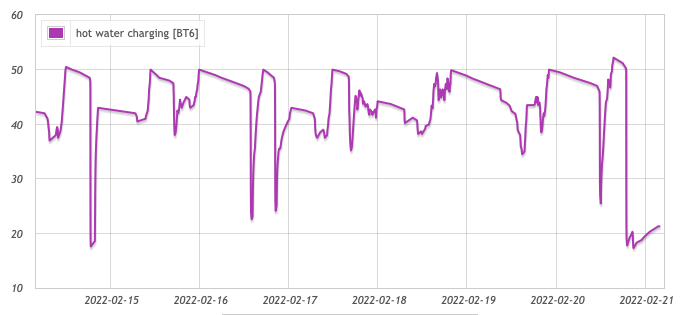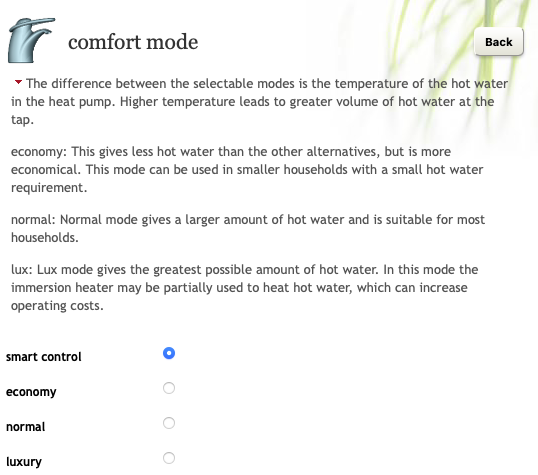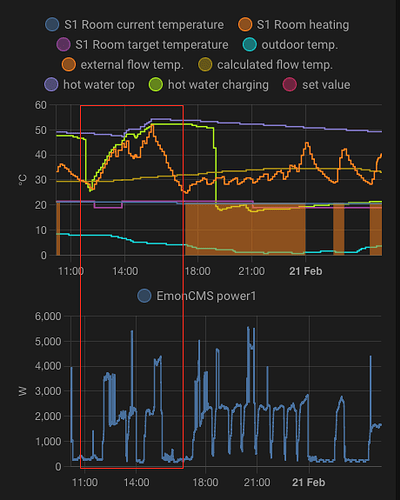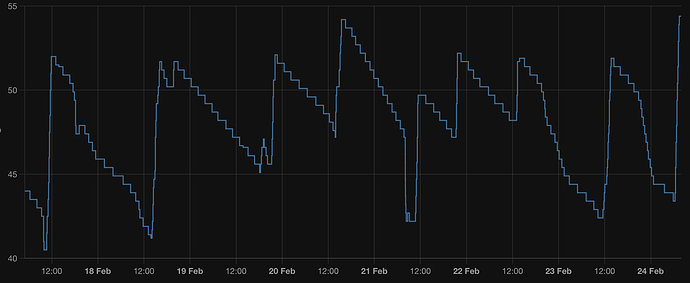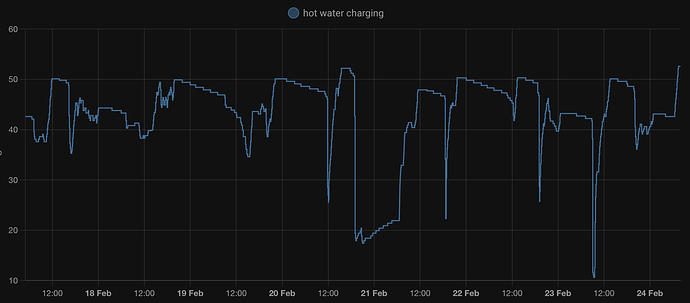David, Thanks.
I’m keen to learn more and suspect the household heating is ‘ok-ish’ in terms of efficiency, but think there is definite room for improvement with heating the water.
We’ve no solar here yet, it’s on the way! At the start of the area marked by the red box the dive ‘hot water charging’ is me in the shower, and I’m associating the energy use after that with the ASHP re-plenishing the hot water supply. The brief spike >5kw is the kettle going on, which usually adds 3kw to whatever else is happening.
I’ve just had a Shelly EM delivered and plan on clamping CT’s on the hob ring and the ASHP ring, to give me definite ASHP usage. But at the minute I see a strong correlation between energy use and changes to the ‘external flow temp’ which allows me to judge ASHP energy usage. ‘S1 heating’ is heating occurring anywhere in the house, so, energy use without ‘S1 heating’ must be used to heat DHW? I’d still like to be able to quantify this, but might need someone with more smarts than me to do some clever stuff in HomeAssistant.
I think the temp increase you refer to must come from the immersion (hence the earlier train of thought around measuring the energy use at that fused spur you mentioned)
You said it is normal to keep DHW at 37, which sounds like a huge efficiency over the 53 that this system is heating to. I wonder how I might regulate that?
Yeah… no idea. I can check to see if the ASHP logged that it was defrosting, but I doubt it was. It could be the induction hob, although the spikes around 1730 - 1800 are definitely induction cooking. Given the rise in ‘external flow temp’ I minded to think it is the ASHP, but not sure why.
Agree… It’s like it pushes the ‘external flow temp’ super high before the heating turns off?
This is bath time for the baby! I wonder if the ASHP has prioritised heating (S1 shows sustained heating) over DHW for a couple of hours then started to replenish the hot water later in to the night? That would make sense, but is unhelpful since we’re unlikely to need DHW again until the morning.
What would you recommend? I’m tempted to move away from ‘smart control’ for DHW. We both work shifts so showering time can be anything from 0500 to 2200, and Hugo’s bath time is pretty much fixed at 1800 - 1830. I could schedule the DHW to switch between economy and normal modes (or even ‘Off’) but how much lead-in time does a system like this need, if for example it was powered off at night at switched to normal to ensure DHW for the morning?
Thanks for your help with this.
Edit to add:
Here’s the Hot Water Top, from the past week, I’d say the temps are definitely topping out to high?
Here is hot water charging, I wonder what happened on the 21st when the system decided not to replenish the DHW supply as quickly? Again, could have prioritised heating I suppose.

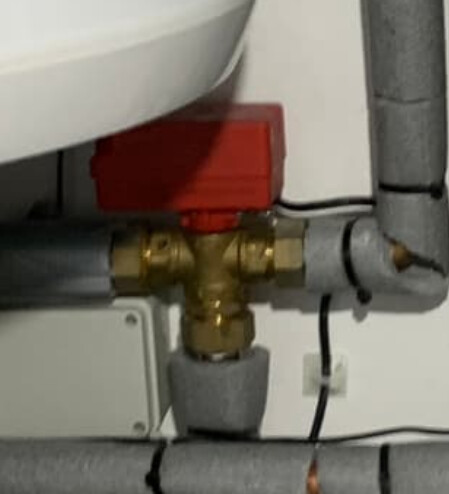
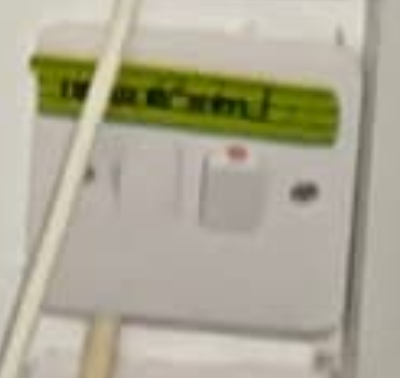
 )
)